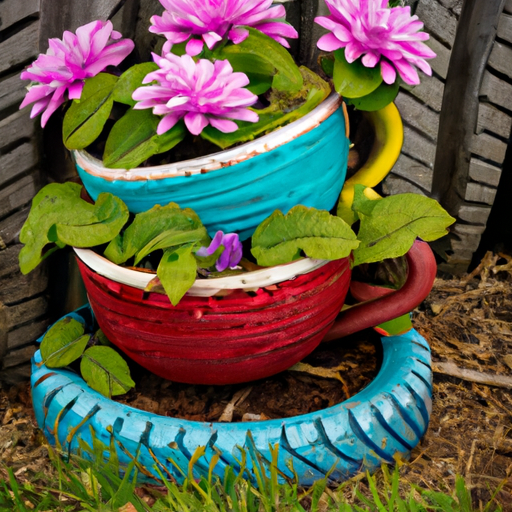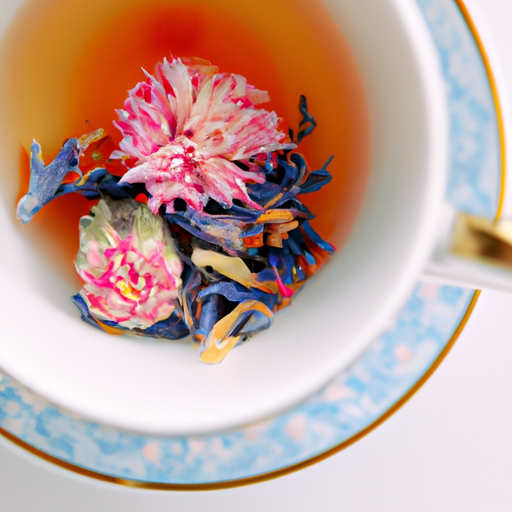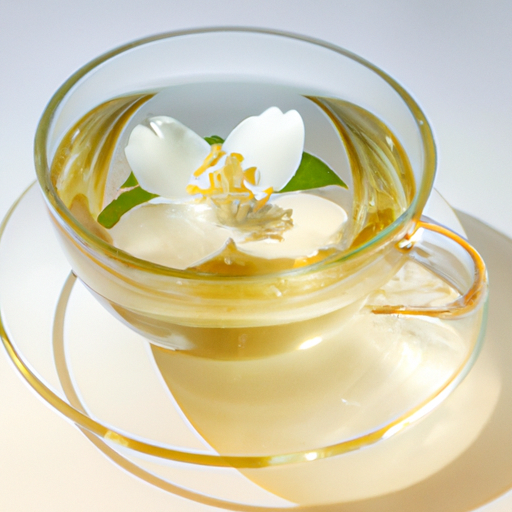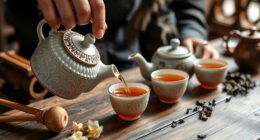Step into the whimsical world of gardening with a charming DIY project: creating a tea cup tire flower planter.
This delightful combination of vintage tea cups and repurposed tires will add a touch of nostalgia and beauty to your garden. Like a blooming bouquet of creativity, this project allows you to showcase your green thumb in a unique and unexpected way.
In this article, I will guide you through the process of transforming a simple tire into a stunning flower planter using your favorite tea cups. From selecting the perfect tea cup to attaching it securely to the tire, I will provide detailed instructions and helpful tips along the way.
Once your tea cup tire flower planter is complete, you can fill it with soil and your favorite plants, ensuring they receive the care they need to thrive.
So, grab your tools and let’s embark on this enchanting journey of crafting and gardening. Get ready to impress your friends and family with your one-of-a-kind tea cup tire flower planter!
Key Takeaways
- Repurpose vintage tea cups and tires to create a whimsical and nostalgic tea cup tire flower planter
- Choose suitable plants for the planter based on climate and sunlight conditions
- Proper watering techniques and care are crucial for the health and growth of the plants
- Regular pruning, fertilizing, and pest control are important for maintaining healthy and vibrant blooms in the planter
Gather Your Materials
Now that you’ve got your creative juices flowing, it’s time to gather all the materials you’ll need to bring this tea cup tire flower planter to life!
Choosing the right plants for your tea cup tire flower planter is crucial for its success. Opt for plants that are suitable for your climate and the amount of sunlight your planter will receive. Consider using small flowers or herbs that won’t overpower the delicate tea cup. Some great options include petunias, marigolds, or thyme.
To ensure healthy plants in your tea cup tire flower planter, there are a few tips to keep in mind. First, make sure your tea cup has drainage holes to prevent water from pooling and causing root rot. Next, use a high-quality potting mix that is well-drained and nutrient-rich. Water your plants regularly, but be careful not to overwater and drown the roots. Additionally, fertilize your plants every few weeks with a balanced fertilizer to promote healthy growth.
Now that you have gathered the materials and know how to maintain healthy plants, it’s time to choose the perfect tea cup for your planter.
Choose the Perfect Tea Cup
First, you’ll want to find the ideal teacup for your charming tire flower arrangement. Which teacup will perfectly complement your garden aesthetic? Choosing unique tea cup designs is essential to adding a touch of elegance to your tire flower planter.
Look for vintage tea cups that are one-of-a-kind, with intricate patterns and delicate details. You can find these treasures at flea markets, thrift stores, or even in your grandmother’s attic. Keep an eye out for tea cups that have a timeless appeal, such as those with floral motifs or pastel colors. These will create a beautiful contrast against the rustic tire.
When searching for vintage tea cups, there are a few tips to keep in mind. Firstly, inspect the cup for any cracks or chips, as these imperfections can affect its durability. Secondly, consider the size of the tea cup. Make sure it fits well within the tire and leaves enough room for the flowers to flourish. Lastly, trust your instincts and choose a teacup that speaks to you personally. It should evoke a sense of nostalgia or bring joy to your heart.
Now that you have found the perfect teacup, it’s time to prepare the tire for your flower planter.
Prepare the Tire
Get ready to transform an ordinary object into a stunning masterpiece – it’s time to unleash your creativity and prepare the tire for its extraordinary new purpose!
To create a unique tea cup tire flower planter, the first step is to prepare the tire. This involves cleaning and painting the tire to give it a fresh and vibrant look.
Start by thoroughly cleaning the tire with soap and water to remove any dirt or grime. Once it’s clean and dry, you can begin the painting process. Choose a color that complements your tea cup and the overall aesthetic you want to achieve. Consider using bright and bold colors to make a statement or opt for a more subtle and muted tone for a sophisticated look.
Apply multiple coats of paint, allowing each layer to dry completely before adding the next. This’ll ensure a smooth and even finish.
Once the tire is painted and dried, it’s time to move on to the next step – attaching the tea cup to the tire.
Attach the Tea Cup to the Tire
To truly bring your masterpiece to life, you’ll need to attach the charming tea cup securely onto the transformed tire, creating a whimsical and enchanting display that will surely captivate all who see it.
Here are some decorating options to consider when attaching the tea cup to the tire:
-
Use strong adhesive: Apply a high-quality adhesive, like epoxy or industrial-strength glue, to the bottom of the tea cup and press it firmly onto the tire. This will ensure a secure attachment.
-
Drill and bolt method: Drill small holes into the bottom of the tea cup and corresponding holes into the tire. Insert bolts through the holes and fasten them tightly with nuts. This method provides extra stability.
-
Wire and twine approach: Wrap a sturdy wire or twine around the handle of the tea cup and secure it tightly to the tire. This method adds a rustic touch and allows for easy removal if desired.
-
Hanging hooks: Install small hooks onto the tire and hang the tea cup using a decorative chain or rope. This creates a unique hanging planter effect.
By attaching the tea cup securely onto the tire using one of these methods, you’ll have a solid foundation for your flower planter. Now, let’s move on to the next step of adding soil and plants to complete your beautiful creation.
Add Soil and Plants
Now it’s time for you to bring your creation to life by adding nutrient-rich soil and vibrant plants, transforming your whimsical display into a flourishing oasis that will surely captivate all who see it.
When choosing the right plants for your tea cup planter, consider the size of the cup and the amount of sunlight it’ll receive. Opt for plants that thrive in partial shade, such as impatiens or begonias, as they’ll do well in a tea cup planter.
Fill the cup with a high-quality potting mix that’s well-draining to ensure healthy plant growth. Before planting, moisten the soil to help it settle in the cup. When adding the plants, gently loosen the roots and place them in the soil, ensuring they’re positioned securely.
Be mindful of the moisture levels in the soil, as tea cups are small and can dry out quickly. Water the plants regularly, making sure the soil remains consistently moist, but not waterlogged.
With proper care and attention, your tea cup tire flower planter will thrive and bring joy to your garden.
Now, let’s move on to placing your tea cup tire flower planter in the garden, where it’ll truly shine.
Place Your Tea Cup Tire Flower Planter in the Garden
Position your charming creation in a prominent spot within your garden, allowing its vibrant colors and whimsical design to become a focal point that’ll delight all who pass by. By incorporating a tea cup tire flower planter into your garden, you can enjoy numerous benefits.
Firstly, it adds a unique and creative touch to your outdoor space, making it visually appealing and inviting. The combination of the tea cups and the tire creates an interesting contrast that’ll surely catch the eye.
When choosing the right location for your tea cup tire flower planter, consider the amount of sunlight your plants need. Most flowers require at least six hours of direct sunlight daily, so find a spot that receives adequate sunlight throughout the day. Additionally, ensure that the location has good drainage to prevent waterlogging, as excess moisture can harm the plants.
To transition into the subsequent section about watering and caring for your plants, remember that proper positioning in the garden is just the first step in creating a thriving tea cup tire flower planter. Now that your planter is in place, it’s essential to provide the necessary water and care to keep your flowers healthy and blooming.
Water and Care for Your Plants
Keep your garden thriving with proper watering and care for your vibrant plants.
The importance of proper watering techniques cannot be emphasized enough when it comes to the growth and health of your plants. One common mistake is overwatering, which can lead to root rot and other fungal diseases. To prevent this, make sure to water your plants thoroughly but allow the soil to dry out slightly before watering again.
Another mistake is underwatering, which can cause wilting and stunted growth. Be sure to water your plants deeply, reaching the root zone, and avoid just wetting the surface. Additionally, it’s important to water your plants at the right time of day, preferably in the morning, to allow for proper absorption and minimize evaporation.
In addition to watering, proper care for your plants includes regular pruning, fertilizing, and pest control. Pruning helps promote healthy growth and prevents overcrowding, while fertilizing provides essential nutrients for vibrant blooms. Keep an eye out for common pests like aphids and snails, and take appropriate measures to protect your plants.
By following these tips for proper watering and care, you’ll ensure that your tea cup tire flower planter and the plants within it thrive. Now, let’s move on to the next section and enjoy your charming garden decoration.
Enjoy Your Charming Garden Decoration
Indulge in the delightful ambiance created by your enchanting garden decor. Your charming garden is now complete with the addition of the tea cup tire flower planter, bringing a touch of whimsy and elegance to your outdoor space. Not only is it a functional DIY garden project, but it also adds a unique and eye-catching element to your landscape.
The tea cup tire flower planter is just one of the many charming garden ideas you can incorporate into your outdoor oasis. It’s a simple yet creative way to repurpose old tires and transform them into a beautiful display for your favorite flowers. The combination of the vintage tea cups and the rustic tire creates a perfect blend of elegance and charm.
To ensure your tea cup tire flower planter continues to thrive, proper care is essential. Regularly water your plants, taking care not to overwater or underwater them. Keep an eye on the soil moisture and adjust your watering schedule accordingly. Additionally, fertilize your plants as needed to provide them with the necessary nutrients for healthy growth.
Get creative with different tea cup designs and colors to further enhance the beauty of your garden. Each unique tea cup adds its own charm and character to the overall aesthetic. Experiment with various arrangements and combinations to create a truly personalized and captivating garden display.
Transitioning into the subsequent section about "get creative with different tea cup designs," let your imagination run wild as you explore the endless possibilities for your charming garden decoration.
Get Creative with Different Tea Cup Designs
To truly enjoy your charming garden decoration, it’s time to get creative with different tea cup designs. Painting techniques can transform a plain tea cup into a unique and eye-catching planter. Here are four ideas to inspire your creativity:
-
Ombré Effect: Use multiple shades of the same color to create a gradual transition from light to dark. Start with a light base coat and layer on darker shades, blending them together for a stunning ombré effect.
-
Floral Patterns: Paint delicate flowers or intricate floral patterns on your tea cup planter. Choose vibrant colors that complement your garden and make the flowers pop.
-
Polka Dots: Create a playful and whimsical look by painting polka dots on your tea cup. Use contrasting colors or stick to a monochromatic theme for a chic and modern design.
-
Upcycling Other Household Items: Don’t limit yourself to just tea cups! Explore the possibility of upcycling other household items as planters. Consider using old mugs, bowls, or even teapots for a unique and eclectic garden display.
Now that your tea cup tire flower planter is beautifully designed, it’s time to share it with friends and family. Let them admire your creativity and be inspired to create their own charming garden decorations.
Share Your Tea Cup Tire Flower Planter with Friends and Family
Share your beautifully designed tea cup tire flower planter with friends and family, and watch their faces light up with admiration and inspiration. Creating a tea cup tire flower planter is not only a great way to repurpose old tires, but it also adds a unique and charming touch to your garden. Here are some DIY tips and tricks to help you make the most out of your tea cup tire flower planter.
First, gather your materials. You will need an old tire, tea cups of various sizes and designs, potting soil, and your choice of flowers. Next, clean the tire thoroughly and paint it in a color that complements your garden. Once the paint has dried, flip the tire over and stack it with other tires to create a sturdy base.
Now, it’s time to arrange the tea cups. Place them upside down in a grid pattern on top of the tire, making sure they are evenly spaced. This will create a stable surface for your plants. Fill each tea cup with potting soil and carefully plant your flowers.
To make your tea cup tire flower planter even more eye-catching, consider adding a decorative element. You could hang small wind chimes or attach colorful ribbons to the tea cup handles.
By following these tea cup tire flower planter DIY tips and tricks, you can create a stunning and unique addition to your garden. Repurposing old tires in this way not only reduces waste but also adds a touch of creativity to your outdoor space. So go ahead, share your creation with friends and family, and inspire them to try their hand at this delightful project.
| Tips and Tricks | Materials Needed |
|---|---|
| Clean the tire thoroughly | Old tire |
| Paint the tire in a complementary color | Tea cups of various sizes and designs |
| Stack tires to create a sturdy base | Potting soil |
| Arrange tea cups in a grid pattern | Flowers |
| Fill tea cups with potting soil | Decorative elements (optional) |
Frequently Asked Questions
Can I use any type of tire for this project?
Yes, you can use different types of tires for this project. Tires made of rubber or plastic are commonly used as they’re durable and can withstand outdoor conditions. Before using the tire, it’s advisable to clean it thoroughly to remove any dirt or debris. Additionally, you can paint the tire to add a personal touch to your flower planter. Just make sure to use paint that’s suitable for outdoor use and safe for plants.
How deep should I fill the tea cup with soil?
To properly prepare the tea cup tire planter for planting, you should fill the tea cup with soil until it’s about two-thirds full. This will provide enough space for the plant’s roots to grow and establish themselves.
It’s important to choose the right type of soil for the tea cup tire planter. Opt for a well-draining soil mix that’s rich in organic matter, as this will promote healthy plant growth and prevent waterlogged roots.
Can I plant any type of flowers in the tea cup tire planter?
Yes, you can plant a variety of flowers in your tea cup tire planter. Some alternative flower options for tea cup tire planters include petunias, marigolds, pansies, and daisies. These flowers are suitable for small containers and can thrive in limited space. To maintain your flowers in the tea cup tire planter, make sure they receive enough sunlight and water regularly. It’s also important to deadhead spent flowers and fertilize them according to the specific needs of each flower variety.
How often should I water the plants in the tea cup tire planter?
To prevent overwatering in tea cup tire planters, it’s important to establish a watering schedule. The frequency will depend on the specific plants you’ve chosen, as well as the surrounding environmental conditions. As a general rule, it’s best to allow the top inch of soil to dry out between waterings.
To make watering more efficient, consider using self-watering systems designed for tea cup tire planters. These systems provide consistent moisture while preventing waterlogging and root rot.
Can I use a different type of container instead of a tea cup for this project?
Yes, you can definitely use alternative containers for this project. There are many creative planter ideas that you can explore. Some options could include using mugs, jars, or even small buckets. These containers can add a unique touch to your flower planter and allow you to showcase your personal style. Just make sure that the container you choose has proper drainage to ensure the health of your plants.
Conclusion
In conclusion, creating a tea cup tire flower planter is a fun and unique way to add charm to your garden. By following the steps outlined in this article, you can easily transform an old tire and a tea cup into a beautiful and whimsical garden decoration.
So gather your materials, choose the perfect tea cup, and get creative with different designs. Share this delightful project with your loved ones and watch as your garden blossoms with beauty and creativity.










